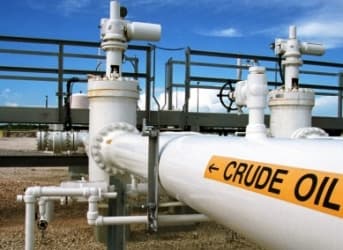A group of investment banks are becoming increasingly gloomy about the direction of oil prices in the near-term. A Wall Street Journal survey of 13 investment banks found a growing degree of pessimism about the oil markets.
The average estimate from the banks for oil prices is for Brent to average just $58 per barrel in 2016, and WTI to trade for $54 per barrel. But just a few months ago, the same survey showed that the banks expected oil prices to average $70 per barrel in 2016.
The growing pessimism is in part due to the potential slowdown in demand, particularly from China. At the same time, Russia and OPEC nations continue to produce at elevated levels. Only U.S. production appears to be declining in any substantial way. U.S. oil output is down to around 9.1 million barrels per day from a peak of 9.6 million barrels per day reached in April 2015. Related: Energy Storage Now Moving To The Next Level
Still, even U.S. shale remains resilient.
The U.S. oil industry is making severe cuts to exploration programs and that may result in significantly lower production in the years ahead, but for now, the drop off in production is proceeding slowly.
That is because producing in places like the Permian Basin is still very much profitable today, even with prices at $50 per barrel or lower. While North Dakota, Louisiana, or Colorado have seen drilling grind to a halt, drilling in the Permian Basin in West Texas is still going strong. In fact, many oil companies are scrapping drilling in other parts of their portfolio and expanding their footprint in the Permian. As a result, production from the Permian is still rising. The Permian stands out because of the abundance of oil and gas in place, making each well more lucrative than a similar well in another basin.
However, while the Permian will slow oil market balancing, it won’t be able to compensate for the loss of production elsewhere. Overall, U.S. production is in decline. Most of the loss in U.S. output has come from the Eagle Ford in South Texas, which has shed over 227,000 barrels per day in output since April. Related: How The Fed Has Backed Itself Into A Corner
Moreover, the decline in overall output could finally start to accelerate as the industry bumps up against the limits of cost-saving measures. Reuters reports that drillers are finding it increasingly difficult to achieve further gains in efficiency. After having squeezed suppliers and service companies, and after cutting expensive projects and laying off workers, there are few other places to find further savings. Many companies no doubt hoped that such measures would be enough for them to last until oil prices rebounded. But with oil still trading below $50 per barrel, a deeper contraction could be just around the corner.
Ultimately, that is what is needed if oil is going to rebound higher than the mid $50s per barrel that so many are predicting we will see in 2016.
By Charles Kennedy
More Top Reads From Oilprice.com:
- Major Oil And Gas M&A News That Has Yet To Make The Headlines
- Putin Is Taking A Big Risk With China Gas Deals
- What The Oil And Gas Industry Is Not Telling Investors


















